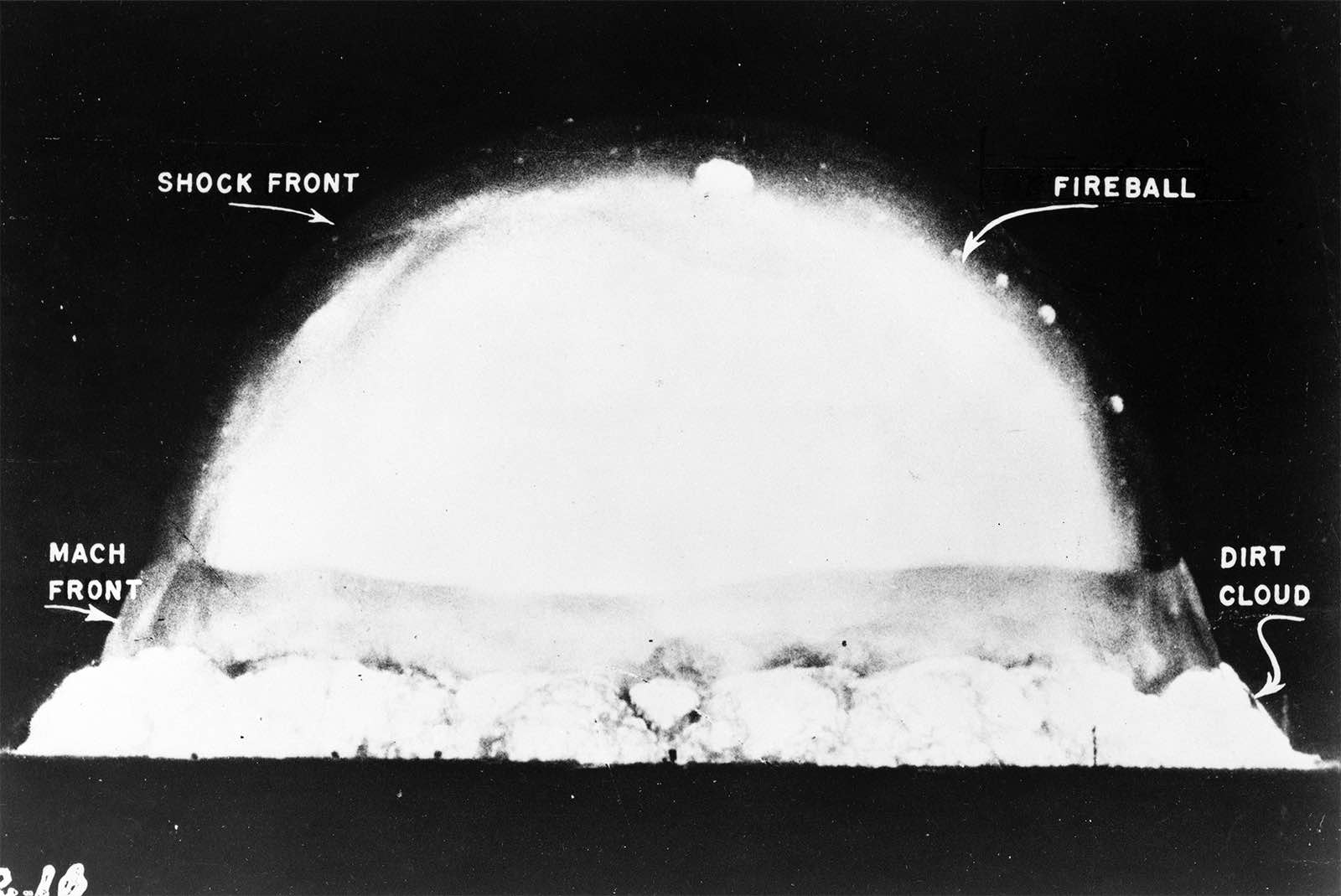Thermal Radiation
A primary form of energy from a nuclear explosion is thermal radiation. Initially, most of this energy goes into heating the bomb materials and the air in the vicinity of the blast. Temperatures of a nuclear explosion reach those in the interior of the sun, about 100,000,000° Celsius, and produce a brilliant fireball.

Two pulses of thermal radiation emerge from the fireball. The first pulse, which lasts about a tenth of a second, consists of radiation in the ultraviolet region. The second pulse which may last for several seconds, carries about 99 percent of the total thermal radiation energy. It is this radiation that is the main cause of skin burns and eye injuries suffered by exposed individuals and causes combustible materials to break into flames.
Thermal radiation damage depends very strongly on weather conditions. Clouds or smoke in the air can considerably reduce effective damage ranges versus clear air conditions.